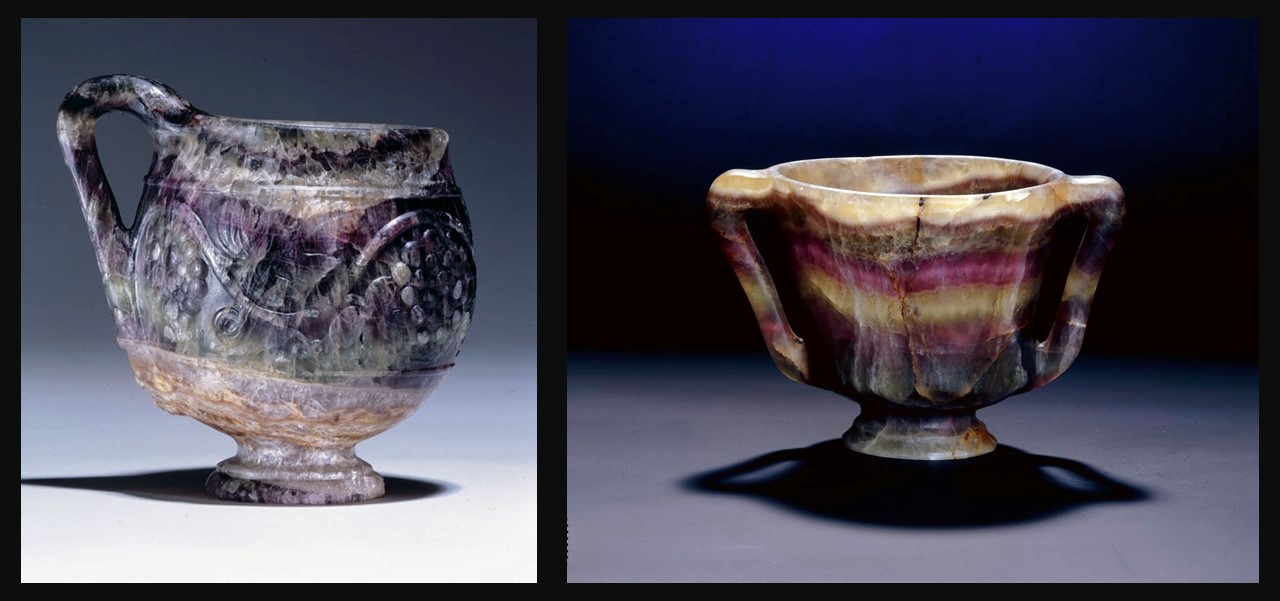
The Crawford Cup, 50-100 AD, Fluorite, Diameter: 10.70 cm, Height: 9.70 cm, British Museum, London, UK https://www.britishmuseum.org/collection/object/G_1971-0419-1
Fluorite(or Fluorspar) crystals were among the most highly prized gemstones in ancient Greece and Rome. In numerous Latin works, the word ‘murrina’ (today, known as murrhine) is used elliptically to designate a certain category of costly vessels, known as ‘vasa murrina.’ Suetonius, for example, tells us that Augustus, of all the royal riches he was presented with in Alexandria… he set aside for himself, one object only, a murrhine vase… The two Murrhine Vases in the British Museum, rare and precious, are worth exploring. https://www.jstor.org/stable/24191123?read-now=1#page_scan_tab_contents Alain Tressaud and Michael Vickers, Ancient Murrhine Ware and Its Glass Evocations, Journal of Glass Studies, Vol. 49 (2007), pp. 143-152 (10 pages), Published by: Corning Museum of Glass
The two Murrhine Vases in the British Museum were discovered by an Austro-Croat officer during the First World War near the then border between Turkey and Syria, in what was once ancient Cilicia. Apparently, he first discovered a marble cist which contained a lead casket containing some gold medallions, a two-handled stone ‘cup’, covered with ashes, and a slightly taller stone ‘jug’ with one carved handle, also covered in ashes. Shortly after World War I, the officer who discovered this amazing treasure, sold both of ‘his’ stone vases, but to two different buyers.
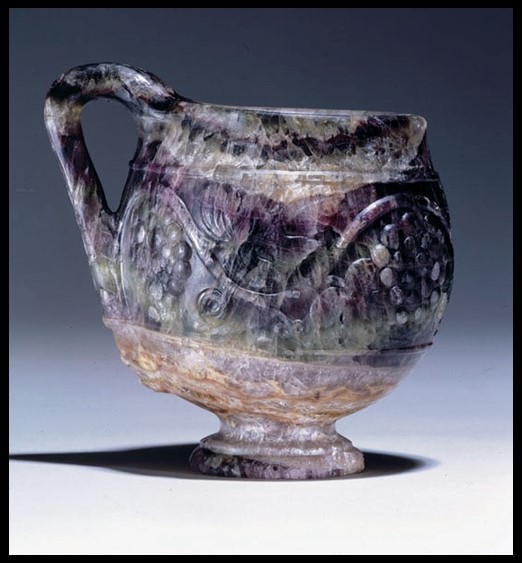
The ‘jug,’ today known as the Barber Cup, went to a Greek dealer of antiquities who sold it to Baron Adolphe Stoclet, the wealthy Belgian engineer, financier, and noted collector, from whose estate the British Museum acquired it in 2004, thanks in part to the British Museum Friends and it is now named in honour of their former Chairman, Nicholas Barber. The acquisition of the Barber Cup was generously funded by the Art Fund and the Caryatid Fund as well. https://artsandculture.google.com/asset/the-barber-cup/2wEO5TvohhMDUw
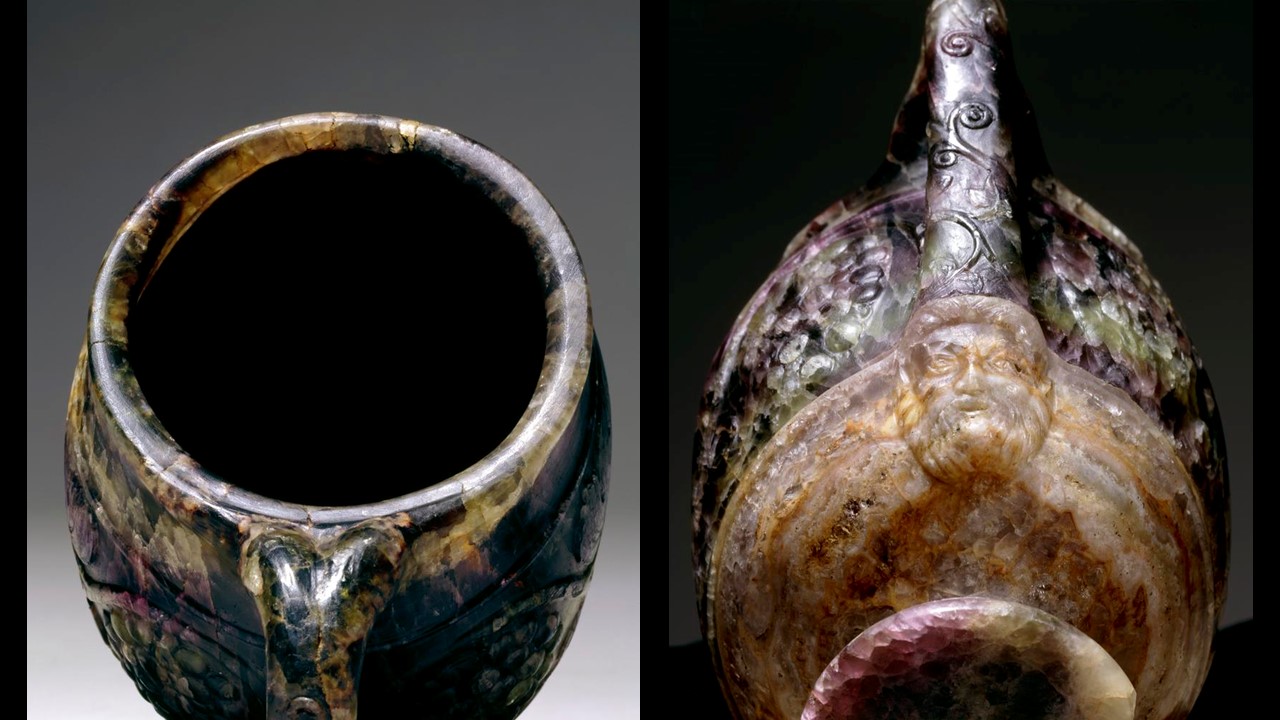
https://www.britishmuseum.org/collection/object/G_2003-1202-1
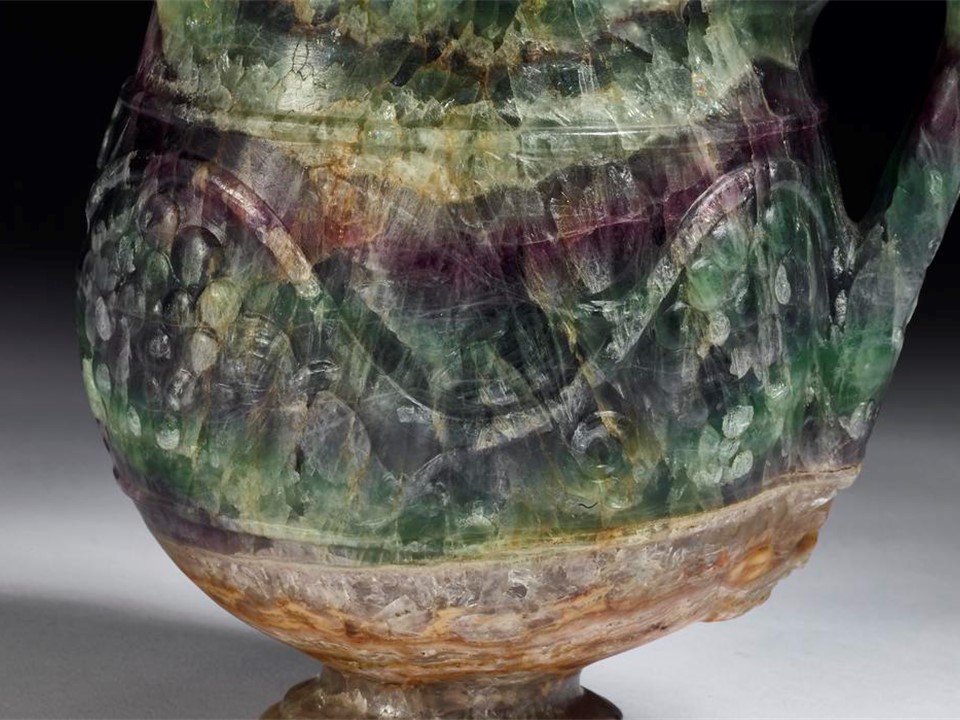
https://www.britishmuseum.org/collection/object/G_2003-1202-1
According to Dyfri Williams, the shape of the Barber Cup has been carved from a single piece of a mineral known as fluorspar and is richly veined with purple, green, yellow, and white. The cup has been further decorated with a low-relief panel of vine leaves, grapes, and tendrils, with a bearded head presumably Dionysus or one of his companions, under the handle. The Barber Cup is unusual, and it is likely that the craftsman intended to create a two-handled ‘kantharos,’ but for some reason changed his mind during the carving. The decoration is very carefully cut and can be found in both in Roman silverware and in glass. The date is probably the 1st century AD, and the find-spot in Roman Cilicia and the high quality of the object suggests the rich and cosmopolitan city of Antioch as a place of manufacture. https://ocean.exacteditions.com/issues/92787/spread/49
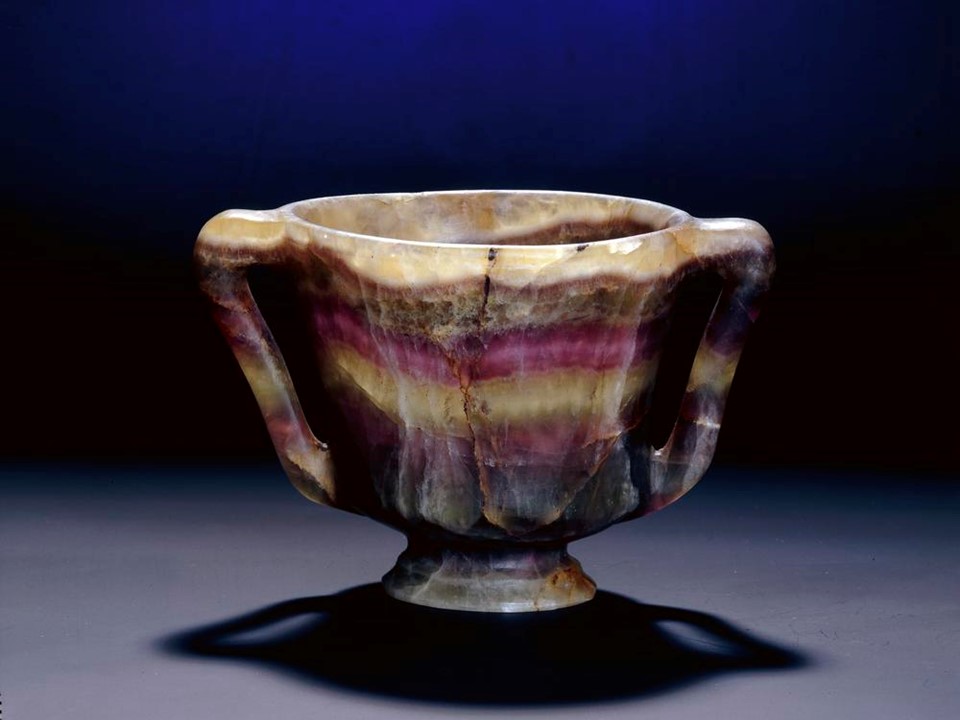
The two-handled ‘cup,’ today known as the Crawford Cup went to a private collector, who published the story of its discovery. In 1971, the ‘cup’ was presented to the British Museum, a gift by the Art Fund in honour of David Lindsay, 28th Earl of Crawford, chairman of the Fund between 1945-1970. The Crawford Cup was also carefully cut from a single piece of fluorspar, and is richly veined with purple, green, and yellow, but has no additional, like the Barber Cup, low-relief decoration. It has the shape of a two-handled goblet, or to be more precise, the shape of the ancient Greek drinking cup known as Kantharos. The shape of the Crawford Cup has been compared to the Hellenistic agate Cup of the Ptolemies in the Cabinet des Médailles at the Bibliothèque Nationale de France in Paris. https://ocean.exacteditions.com/issues/92787/spread/49
For a Student Activity on the Barber Cup, please… Check HERE!